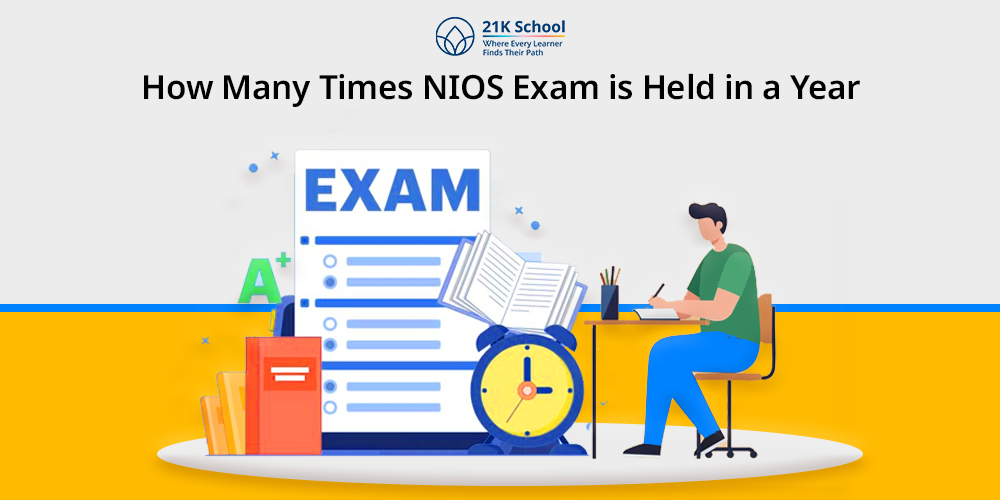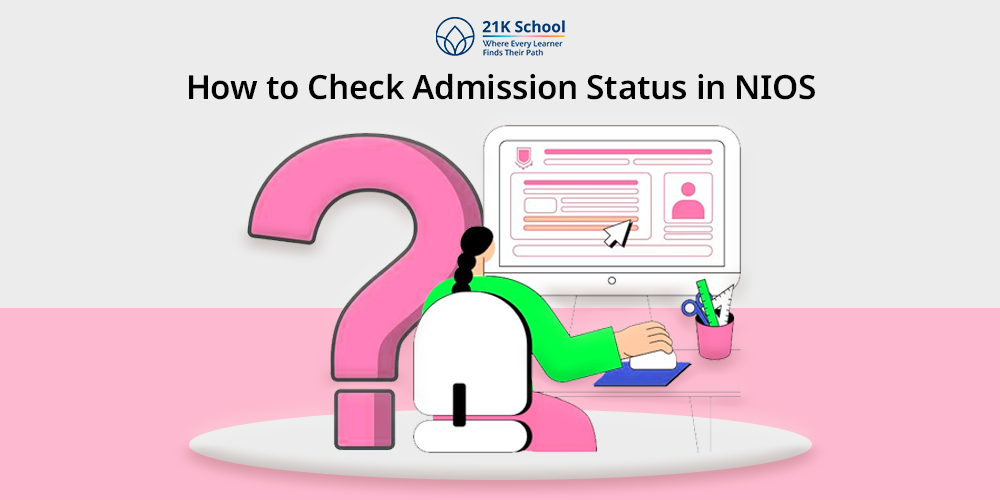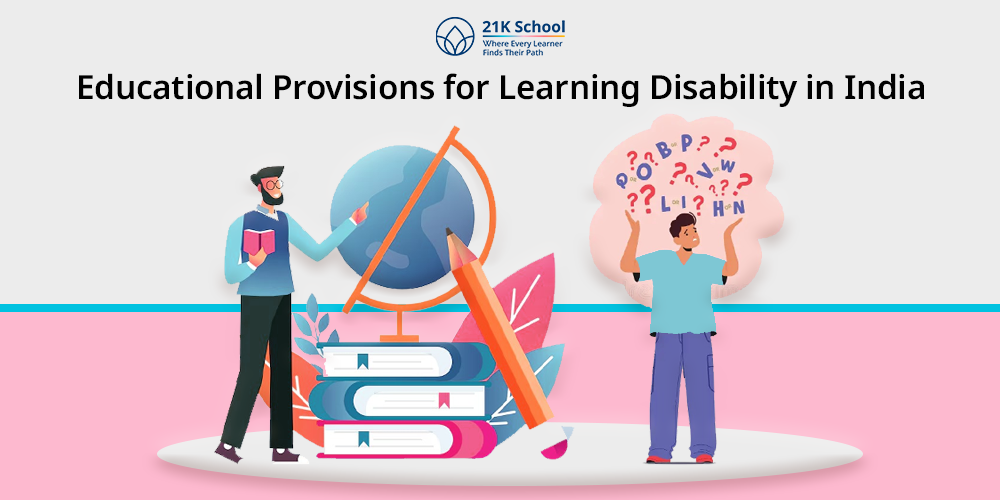
The concept of AI in education conjures the picture of robots teaching classrooms, and indeed, AI is being used to enhance teaching in smart classroom today.
The benefits of AI include personalized learning experience for the students and ease of administration for the educators.
In this blog post, we will explore the key reasons to integrate AI in the education, by showing how it can completely change the learning, how it can make the education more accessible and prepare students for the what’s to come.
Let us delve into possible future of education with help of the AI.
Table of Contents
- What is AI in Education?
- Benefits of Artificial Intelligence in Education
- 1. Personalization of Learning
- 2. Enhanced Efficiency for Educators
- 3. Data-Driven Insights for Better Decision-Making
- 4. Increased Accessibility
- 5. Smart Content Creation
- 6. 24/7 Learning Support
- 7. Improved Engagement and Motivation
- 8. Improved Assessment and Feedback
- 9. Cost-Effectiveness
- 10. Facilitation of Lifelong Learning
- 11. Enhanced Collaboration and Communication
- 12. Support for Teachers’ Professional Development
- The Future of AI in Education
- Conclusion
What is AI in Education?
AI in education describes the utilization of computing systems which function similarly to human brains to facilitate educational needs.
A computer system exists which understands individual abilities and needs so it delivers customized educational content to learners.
That’s AI! The technology helps teachers by performing paper grading and providing valuable lesson concepts.
Some AI systems function similarly to tutoring interactions because they provide verbal communication abilities.
The system functions like an extraordinary student aid that improves both educational fun and educational success for the entire community.
Benefits of Artificial Intelligence in Education
1. Personalization of Learning
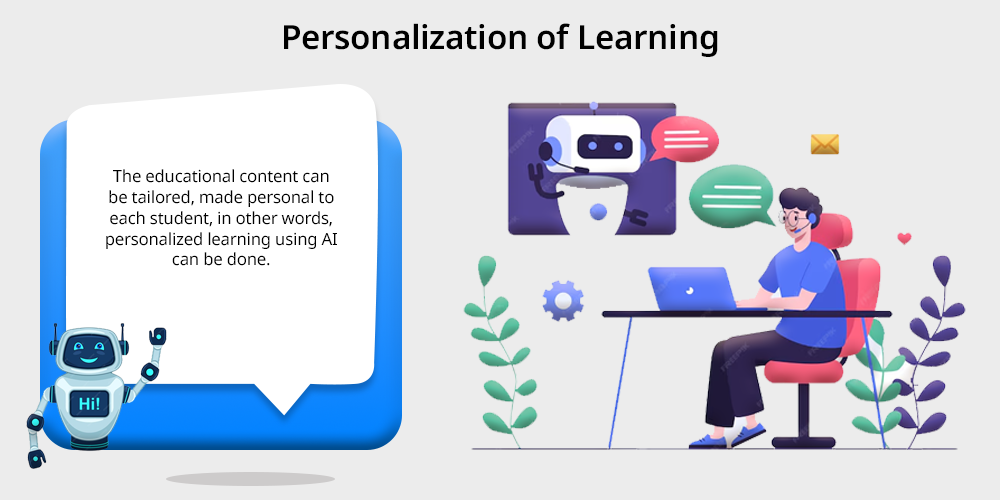
The educational content can be tailored, made personal to each student, in other words, personalized learning using AI can be done.
By noticing a student’s progress, strengths, and weakness, AI can make the difficulty level, recommend resources for the student and give assigned exercises to the student.
This helps students acquire information as per their own pace and make sure they’ve got a good grasp before moving on.
This personalisation helps to boost engagement and retention of students, as the students are not overwhelmed nor bored by the content they are being exposed to.
2. Enhanced Efficiency for Educators
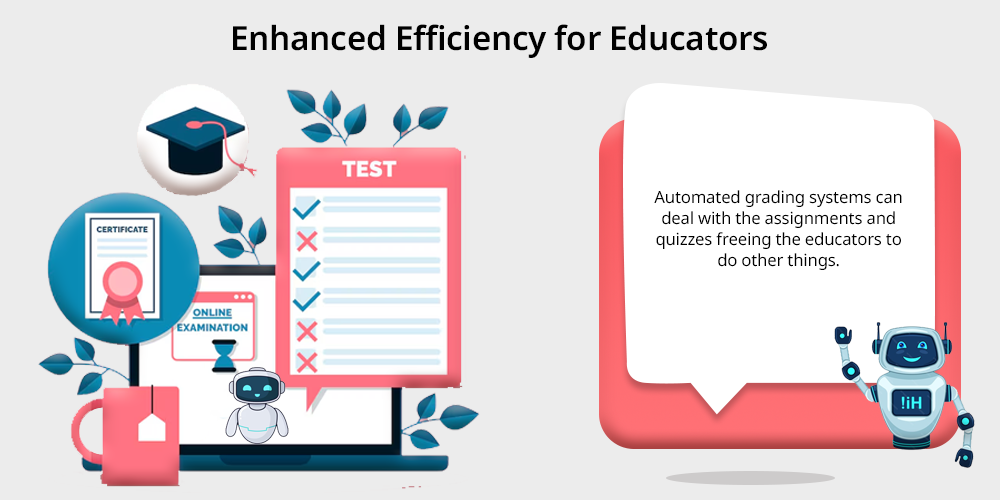
Artificial Intelligence is used to take care of issues regarding the teachers and some responsibilities of the teachers are dealt with by exploiting the potentiality of Artificial Intelligence in streamlining administrative task.
Automated grading systems can deal with the assignments and quizzes freeing the educators to do other things than repeating the same job over and over again.
Also Read: Understanding the A-Levels Grading System: A Guide for Students
In addition to that, AI assists you in planning out, scheduling, and recording student’s performance.
Teachers are able to focus on students and certain aspects of their teaching in such a way that their personal attention to the students is enhanced, by spending less time on tedious tasks of classroom implementation.
Now the efficiency is improved thus allowing the educator to spare much of the time for the teaching and little for administrative duties.
3. Data-Driven Insights for Better Decision-Making

Large amounts of student data are collected and graded by AI in order to find out, at least to some extent, performance trends.
AI can help educators see the patterns in test scores, assignments, class participation, etc. to highlight areas in which students are doing well or not so well.
It enables educators to effectively and rapidly respond to situations that arise and maximize learning outcomes for each learner.
4. Increased Accessibility
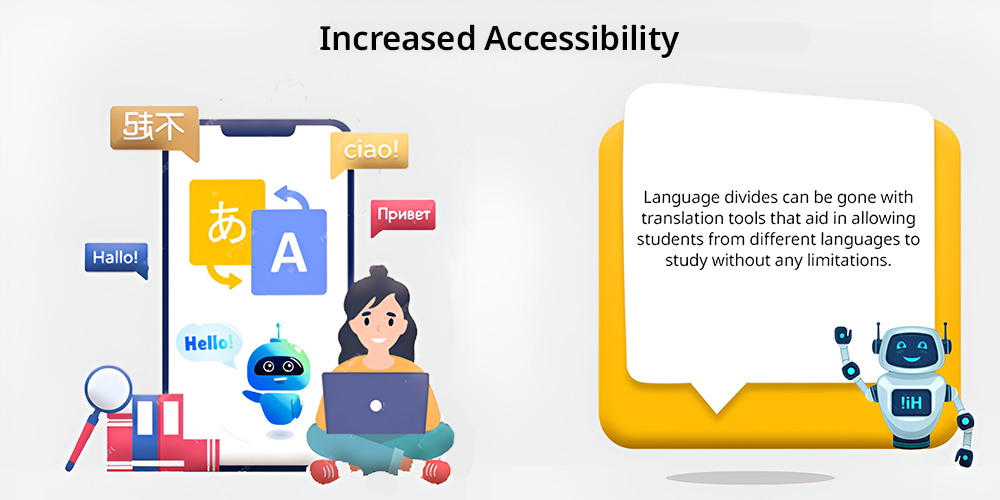
AI makes possible education at the cost of access for students with different needs of learning. For example, AI can aid hands on deficient students or those that have problems in writing.
Language divides can be gone with translation tools that aid in allowing students from different languages to study without any limitations.
In addition, text to speech and speech to text software can also give students with learning disabilities the same access to education in order to ensure an inclusive learning environment.
5. Smart Content Creation
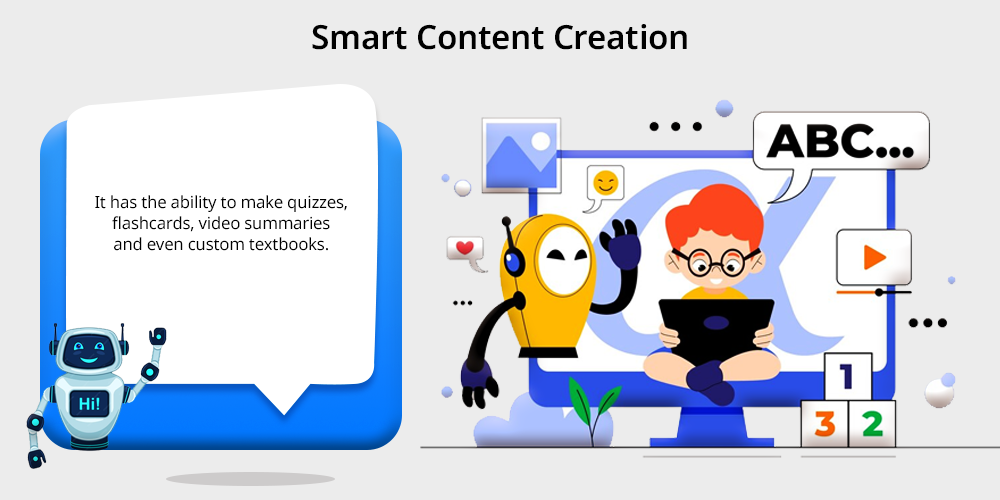
It provides AI to generate interactive and engaging content for students and how to improve their learning needs. It has the ability to make quizzes, flashcards, video summaries and even custom textbooks.
These AI made resources are of the kind that can be changed according to the student’s performance so that they are always relevant and challenging.
Moreover, AI can do what the traditional gaming systems cannot, that is, automate the process of recreating educational games and simulations, and learning would become more enjoyable and immersive.
Such flexibility in the creation of contents enhances student interest and their interpretation of subjects taken.
6. 24/7 Learning Support
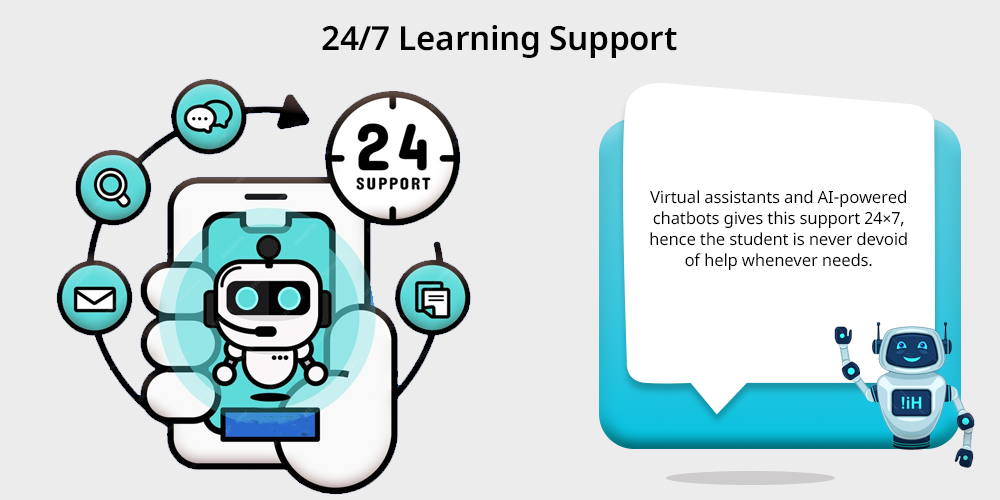
Virtual assistants and AI-powered chatbots gives this support 24×7, hence the student is never devoid of help whenever needs.
These AI systems answer questions, explain concepts or give students the advice they require any time of the day.
This availability is especially handy for the students travelling out of school hours, or who are in a different time zone.
So with support at your fingertips, students can continue learning and deal with difficulties as they come along, so they don’t end up slipping behind.
7. Improved Engagement and Motivation
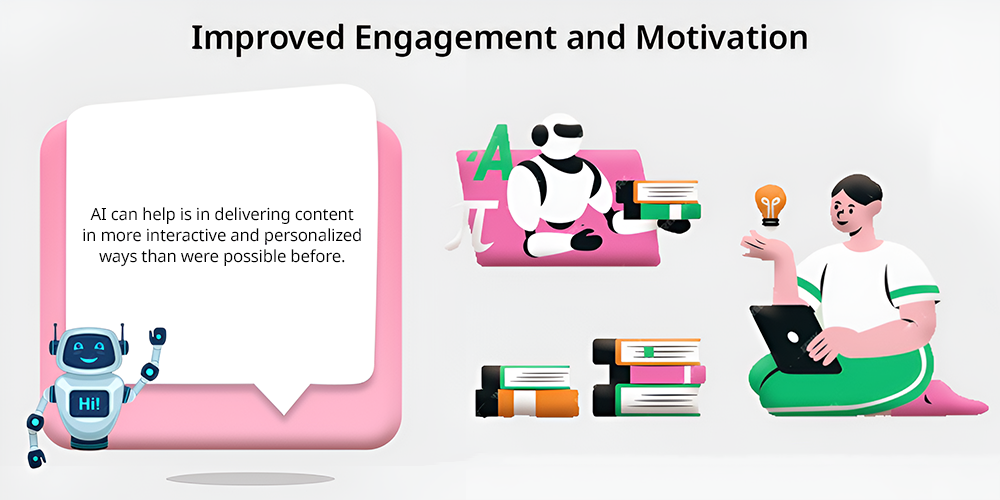
Another way AI can help is in delivering content in more interactive and personalized ways than were possible before.
AI can use analytics to offer students various types of videos or articles or practice exercises as per their interests and learning styles.
It also incorporates gamification so that lessons become challenges and learning is rewarded for its progress.
The dynamic and personalized learning experiences experienced by students make them motivated, as their learning is made more personalized and immediate feedback on performance is instantly provided to them.
8. Improved Assessment and Feedback
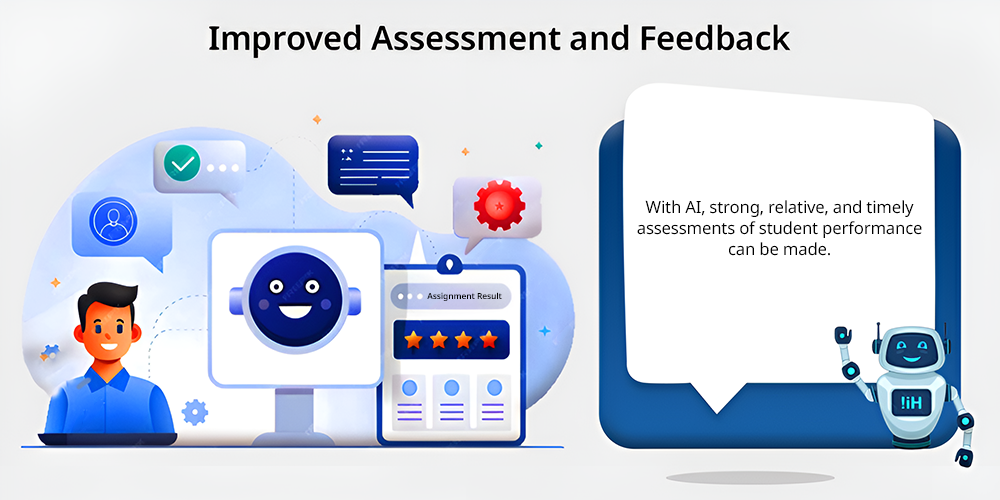
With AI, strong, relative, and timely assessments of student performance can be made.
With continuous monitoring and analysis of data AI will give real time feedback to the students so that they get the idea about their weaknesses and where they can bring their improvement.
The immediate feedback helps students to adjust their learning strategies as well as focus on areas that need some re attention.
AI is also great for educators, with it offering detailed information on student progress so that interventions can be made at precisely the right time and the teaching can be adjusted to provide clearer support to each student.
9. Cost-Effectiveness
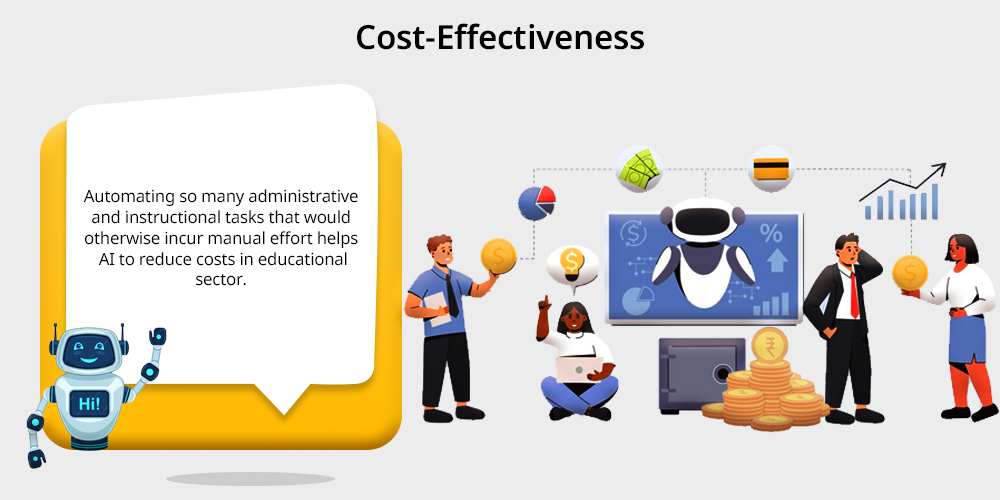
Automating so many administrative and instructional tasks that would otherwise incur manual effort helps AI to reduce costs in educational sector.
For example, automated grading and personalized learning platforms accomplish eliminating other staff and resources.
AI Tutoring Services, like AI Based Tutoring, are also capable of offering affordable support about what students may not have the means to receive from private tutors.
The predictive abilities of AI enables schools and institutions to: increase operational efficiency as well as the optimization of resource use; which leads to decreasing overhead costs possible thereby making the quality education more affordable and accessible to a greater number of students.
10. Facilitation of Lifelong Learning
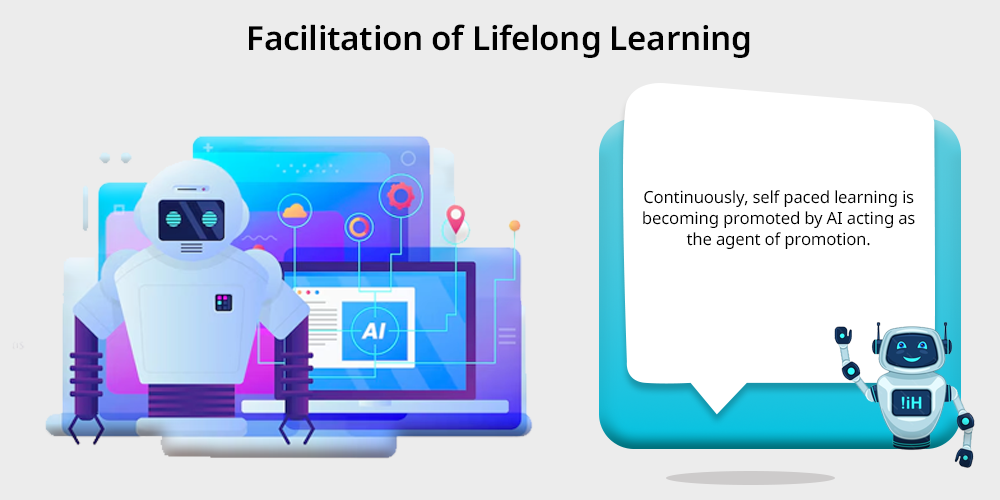
Continuously, self paced learning is becoming promoted by AI acting as the agent of promotion.
With such AI powered platforms, people can derive benefits from courses, certificates and resources relevant for their professional as well as personal development.
This helps create customized learning paths that the learner can easily adopt along the way.
11. Enhanced Collaboration and Communication
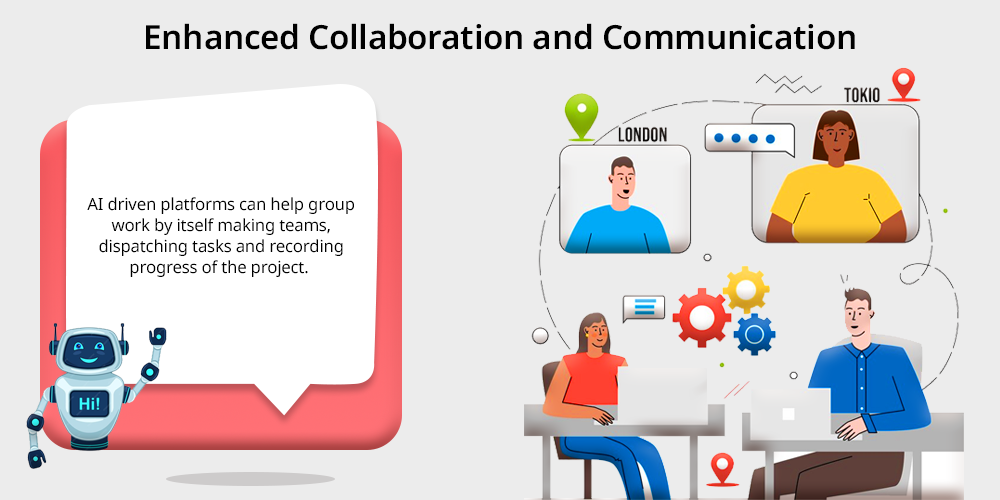
AI fosters better collaboration among students, teachers, and even between students themselves.
AI driven platforms can help group work by itself making teams, dispatching tasks and recording progress of the project.
Collaboration tools supported by AI can assist students in exercising better communication skills through helping them with language translation, real time, feedback and shared study resources among other things.
These tools foster teamwork, improve communication skills and enhance peer to peer learning which are all qualities students should be educated with.
12. Support for Teachers’ Professional Development
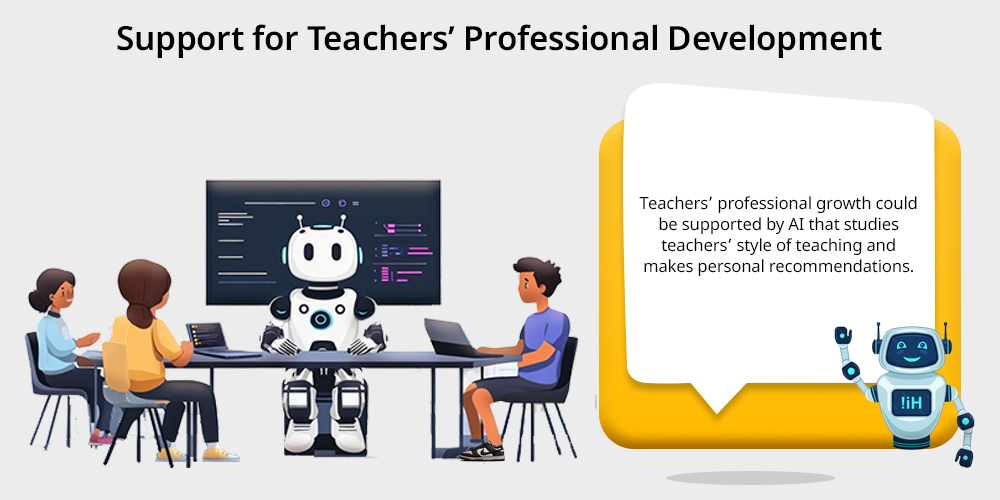
Teachers’ professional growth could be supported by AI that studies teachers’ style of teaching and makes personal recommendations.
AI can make classroom performance based suggestions that include how to enhance the delivery of lessons, providing resources for additional study, and points for professional development.
In addition, AI can assist educators to be kept by current teaching trends and techniques by suggesting related studies and materials.
This is designed to continue to evolve teachers and their practice making for improved teaching quality, with better outcomes for students.
The Future of AI in Education
The future for AI in education is bright, because that technology can personalize and be an engaging learning experience. What awaits us is given below.
- Personalized Learning: AI will identify individual student strengths, tailor learning paths and content, as well as pacing, to their unique needs. No more one-size-fits-all classrooms!
- Automated Administrative Tasks: Grading, lesson planning, and all the administrative burdens will be streamlined by AI so that teachers will have more time to interact with and inspire students.
- Gamification and Engagement: Gamified platforms and adaptive challenges can help AI to build more interactive and interesting learning environments in which learning is more fun and motivating.
- Predictive Analytics: AI can flag the students at risk of falling behind so that early interventions are put in place to prevent at risk students from slipping through the cracks.
Conclusion
AI in education is not about getting rid of teacher but it’s a way to let them be more effective and more engaging to students.
Yet, to reap the benefits of AI, it not only has to overcome many challenges, such as data privacy and ethical concerns, but the potential benefits are inarguable.
AI can be used to enable personalized learning paths to automated administrative tasks to make the difference in educational outcomes and prepared students for 21st century.
Responsible and thoughtful use of AI is an opportunity for education to be transformed for the better.

